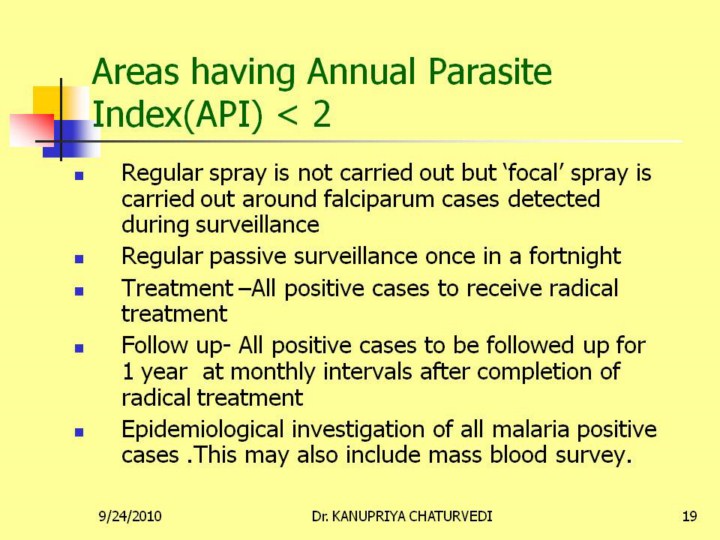| front |1 |2 |3 |4 |5 |6 |7 |8 |9 |10 |11 |12 |13 |14 |15 |16 |17 |18 |19 |20 |21 |22 |23 |24 |25 |26 |27 |28 |29 |30 |31 |32 |33 |34 |35 |36 |37 |38 |39 |40 |41 |42 |43 |44 |45 |46 |47 |48 |49 |50 |51 |52 |review |
 |
In these areas the principal activities are active and passive surveillance, and presumptive and radical treatment The supportive activities are case follow -up, epidemiological investigation, and focal spraying where ever indicated. Surveillance in malaria essentially aimed at case finding and case confirmation. The efficacy of surveillance is determined by early identification of cases and prompt institution of radical treatment. The MPO strategy employs both active and passive surveillance mechanisms. Active surveillance is carried out by multipurpose health workers who visit every house in their respective areas at fortnightly intervals . They enquire whether any one is suffering or has suffered from fever during the previous fortnight. In the event of a positive response a worker prepares a blood smear of suspected case making a thin and thick film on the same slide. The worker also gives a single dose presumptive chemotherapy to the case and makes the necessary entries in the stencil of the house card. He takes the blood smear to the Primary Health Centre (PHC) laboratory for microscopic examination, and in the event of positive report, he contacts the confirmed case and puts him on a course of radical chemotherapy.
|